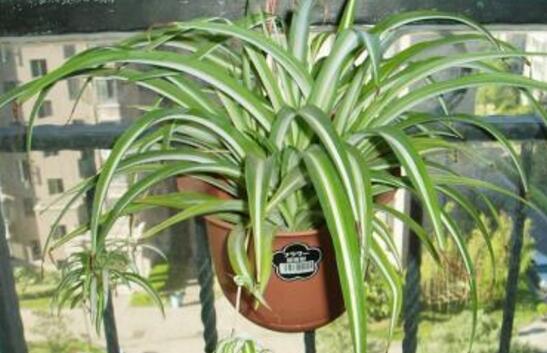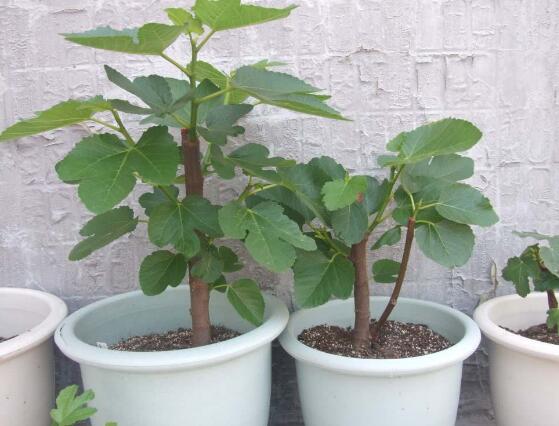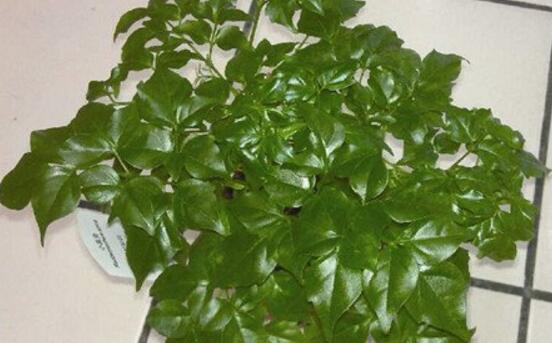How to raise the hanging orchid, the breeding methods and matters needing attention / remember 6 tips
It is well known that the role and efficacy of hanging orchids are very many, it not only has a high ornamental value, but also can remove indoor formaldehyde, so many people plan to raise a few pots at home, so how to raise hanging orchids is correct? The editor will introduce to you the breeding methods and matters needing attention of hanging orchids.
How to raise the orchid?

Before we know how to raise the orchid, we can familiarize ourselves with its growth habits. Cymbidium prefers warm, humid and semi-shady environment, its adaptability is very strong, it is drought-resistant but not cold-resistant; it likes fertile and loose soil with good drainage; it does not require high light, medium light can survive, and its ability to withstand weak light is not poor. I don't like high temperature.
Culture methods and matters needing attention of Cymbidium
1. How much temperature is suitable for hanging orchids?
The most suitable temperature for the growth of Cymbidium is 15-25 degrees, which grows fastest at 20-24 degrees, but is prone to creeping branches; the overwintering temperature should not be less than 5 degrees, otherwise there will be cold damage; when the temperature is higher than 30 degrees, it will stop growing and the leaf tips will be yellowed.
Note: the ambient temperature of the orchid should be kept above 12 degrees in winter and below 30 degrees in summer.
Second, what kind of basin and soil should be used for hanging orchids
Flowerpots: it is best to use clay flowerpots, plastic pots, porcelain pots or ceramic pots to plant orchids. You can also use flowerpots with hooks to hang, and choose the size of flowerpots according to the size of the plant.
Soil: Cymbidium likes loose and fertile sandy soil. It can be mixed with 3 parts of rotten leaf soil, 3 parts of garden soil, 3 parts of sandy soil and 1 part of rotten cake fertilizer. If there are no conditions, you can buy the configured basin soil in the market.
Note: the soil must be well drained, which is helpful for watering and fertilization to avoid overwatering and causing stagnant water.
Third, the lighting requirements of hanging orchids.
Hanging orchids like semi-shady environment, even in the weak light environment can grow, but too dark environment will grow slowly, may also affect its flowering, so to avoid too strong or too dark environment.
Note: avoid direct sunlight in spring and autumn; cover 50-70% of the sun in summer. Some varieties such as Phnom Penh are very afraid of the sun, so you must avoid being exposed to the sun.
4. What is the suitable moisture content of the orchid?
Cymbidium has strong drought resistance, although it can not be watered for several days and will not dry to death, but it prefers a humid environment, so it is very important to keep the soil moist, which requires frequent watering.
Note: you should water more in summer and spray water on the branches and leaves at noon. In winter, the temperature should be less than 5 degrees. In the breeding methods and matters needing attention, temperature is one of the main reasons that affect the growth of Cymbidium.
Is it necessary to apply fertilizer to the orchid?
As a plant with strong adaptability, Cymbidium is also highly tolerant to fertilizer, and its leaves will turn yellow if the fertilizer is not enough, so we should pay attention to fertilizing it. Fertilize once every 7-10 days when the growth is exuberant in spring, or once every two weeks, and stop fertilizing in winter. Note: although the orchid has a certain fertilizer tolerance, it should not be fertilized too much at one time. When the ambient temperature is lower than 4 ℃, it should be stopped when the fertilization is less than 4 degrees.
6. do you want to trim the hanging orchid?
Cymbidium needs to be pruned frequently, cutting off old roots, rotten roots and wilderness to promote the growth of new leaves, and pruning can avoid root accumulation, which is easy to be overlooked in the breeding methods and precautions of Cymbidium.
Note: pruning needs to pay attention to the use of tools, do not use scissors to trim it, because it will cause the wound to not heal.
How can hanging orchids be more exuberant
Doing a good job of the above 6 points can basically ensure the healthy and healthy growth of the orchid, and if you want to make it grow more exuberantly, it is very important to control the temperature. The orchid grows faster in the environment of 20-24 degrees. If you can maintain this temperature, then it can undoubtedly make the orchid more exuberant.
The most artistic culture method and cultivation matters needing attention of Pearl Cymbidium
In recent years, as more and more people began to cultivate succulent plants, gradually breeding succulent plants has become a popular trend, a variety of succulent plants continue to pour into the market, appear in front of people, pearl orchid is one of them. When you first hear the name Pearl Cymbidium, most people may think that it is a hanging orchid, but in fact it is not, it is a special succulent plant, its shape is mainly composed of a string of bulging, full green oval leaves, there are Buddha beads, green grapes, green bell, lover's tears and other beautiful nicknames. So how to raise this kind of plant. Let's take a look next.
The culture method of pearl orchid
At present, there are three main methods of breeding pearl orchid, cutting propagation, ramet propagation and seed propagation, of which seed propagation is very rarely used, so it is not recommended. Cutting propagation of pearl orchid is the simplest and most commonly used method. Cutting pearl orchids, you need to choose healthy plant branches, it is best to cut from the protruding parts of the plant, and then plant the rest of the plant shallowly in the prepared soil, do not bury it too deep, and do not immediately water it. You can water it later, but only once. In about a month or so, this branch can sprout on its own.
As for ramet propagation, it is also a popular breeding method. Ramet propagation can not be carried out in winter, because the winter climate is cold and the temperature is too low, which is not conducive to plant growth. Generally in the spring, choose the healthy pearl orchid for split, divided into two to several clusters, respectively potted to become a new plant.
Matters needing attention in the cultivation of Pearl Cymbidium
The main results are as follows: 1. Pearl Cymbidium likes loose and fertile soil rich in organic matter, so it is best to choose rotten leaf soil as its cultivation soil during cultivation, which is rich in organic matter, loose and permeable, good filtration and high fertility. it can provide sufficient nutrients for the growth of pearl orchid.
2. The pearl orchid likes the warm environment, but it has strong adaptability, high temperature resistance and relatively cold resistance. However, in the state of high and low temperature, although it can grow normally, it is almost dormant and the growth is very slow. The best temperature for pearl orchids is between 20 and 28 degrees Celsius.
3. Pearl hanging orchid likes to be wet, but its drought resistance is also very good, but its corrosion resistance is not very good, avoid drought and waterlogging. Daily watering should keep in mind that it would rather be dry than wet, especially in summer, when the temperature is high and the water evaporates quickly, people greatly increase the number of watering times and the amount of water, and there is too much water in the soil, which can easily lead to rotting roots. If decay occurs, the rotten parts should be subtracted in time.
4. Pearl orchid still has a lot of diseases and insect pests, among which aphids are relatively common, most of which occur in spring and can be killed by 1500 times oxidizer. In summer, it is also prone to mite harm, which can be killed with 1000 times triclofenac. At the same time, attention should be paid to maintaining the state of ventilation and strict prevention of diseases and insect pests during cultivation.
Conclusion: Pearl Cymbidium is a very special succulent plant, its shape is indeed more like Cymbidium from a distance, but each of its small oval leaves is very small and cute. When breeding, you should pay more attention to it and breed it carefully.
[you may be interested]
? How to cultivate bluegrass? What is man-made fiber? How to identify Hetian Yu? The size of the quilt? Chrysanthemum pillow
? Which brand of mattress is good? What does four-leaf clover stand for? What is polyester fiber? Pillow size? Fabric count
The most artistic culture methods and cultivation matters needing attention of the pearl orchid
In recent years, as more and more people began to cultivate succulent plants, gradually breeding succulent plants has become a popular trend, a variety of succulent plants continue to pour into the market, appear in front of people, pearl orchid is one of them. When you first hear the name Pearl Cymbidium, most people may think that it is a hanging orchid, but in fact it is not, it is a special succulent plant, its shape is mainly composed of a string of bulging, full green oval leaves, there are Buddha beads, green grapes, green bell, lover's tears and other beautiful nicknames. So how to raise this kind of plant. Let's take a look next.
The culture method of pearl orchid
At present, there are three main methods of breeding pearl orchid, cutting propagation, ramet propagation and seed propagation, of which seed propagation is very rarely used, so it is not recommended. Cutting propagation of pearl orchid is the simplest and most commonly used method. Cutting pearl orchids, you need to choose healthy plant branches, it is best to cut from the protruding parts of the plant, and then plant the rest of the plant shallowly in the prepared soil, do not bury it too deep, and do not immediately water it. You can water it later, but only once. In about a month or so, this branch can sprout on its own.
As for ramet propagation, it is also a popular breeding method. Ramet propagation can not be carried out in winter, because the winter climate is cold and the temperature is too low, which is not conducive to plant growth. Generally in the spring, choose the healthy pearl orchid for split, divided into two to several clusters, respectively potted to become a new plant.
Matters needing attention in the cultivation of Pearl Cymbidium
The main results are as follows: 1. Pearl Cymbidium likes loose and fertile soil rich in organic matter, so it is best to choose rotten leaf soil as its cultivation soil during cultivation, which is rich in organic matter, loose and permeable, good filtration and high fertility. it can provide sufficient nutrients for the growth of pearl orchid.
2. The pearl orchid likes the warm environment, but it has strong adaptability, high temperature resistance and relatively cold resistance. However, in the state of high and low temperature, although it can grow normally, it is almost dormant and the growth is very slow. The best temperature for pearl orchids is between 20 and 28 degrees Celsius.
3. Pearl hanging orchid likes to be wet, but its drought resistance is also very good, but its corrosion resistance is not very good, avoid drought and waterlogging. Daily watering should keep in mind that it would rather be dry than wet, especially in summer, when the temperature is high and the water evaporates quickly, people greatly increase the number of watering times and the amount of water, and there is too much water in the soil, which can easily lead to rotting roots. If decay occurs, the rotten parts should be subtracted in time.
4. Pearl orchid still has a lot of diseases and insect pests, among which aphids are relatively common, most of which occur in spring and can be killed by 1500 times oxidizer. In summer, it is also prone to mite harm, which can be killed with 1000 times triclofenac. At the same time, attention should be paid to maintaining the state of ventilation and strict prevention of diseases and insect pests during cultivation.
Conclusion: Pearl Cymbidium is a very special succulent plant, its shape is indeed more like Cymbidium from a distance, but each of its small oval leaves is very small and cute. When breeding, you should pay more attention to it and breed it carefully.
[you may be interested]
? How to cultivate bluegrass? What is man-made fiber? How to identify Hetian Yu? The size of the quilt? Chrysanthemum pillow
? Which brand of mattress is good? What does four-leaf clover stand for? What is polyester fiber? Pillow size? Fabric count
- Prev

How to grow potted figs, the cultivation techniques / light of figs should be sufficient.
Fig is a common plant in people's life, and people are familiar with the efficacy and function of fig, so many people want to grow it at home. So how to plant figs in potted plants, and what should be paid attention to in the cultivation techniques of figs? Next, the editor will take you to learn about it.
- Next

What if the leaves of rich trees turn yellow? learn 5 to find an easy solution / too strong light and too much fat.
As a kind of foliage plant, in addition to its beautiful meaning, the most valued thing is its beautiful leaves. However, indoor farming is not as good as outdoor breeding. For various reasons, rich trees often have all kinds of problems, such as yellowing leaves. What about rich trees with yellow leaves?
Related
- Fuxing push coffee new agricultural production and marketing class: lack of small-scale processing plants
- Jujube rice field leisure farm deep ploughing Yilan for five years to create a space for organic food and play
- Nongyu Farm-A trial of organic papaya for brave women with advanced technology
- Four points for attention in the prevention and control of diseases and insect pests of edible fungi
- How to add nutrient solution to Edible Fungi
- Is there any good way to control edible fungus mites?
- Open Inoculation Technology of Edible Fungi
- Is there any clever way to use fertilizer for edible fungus in winter?
- What agents are used to kill the pathogens of edible fungi in the mushroom shed?
- Rapid drying of Edible Fungi

